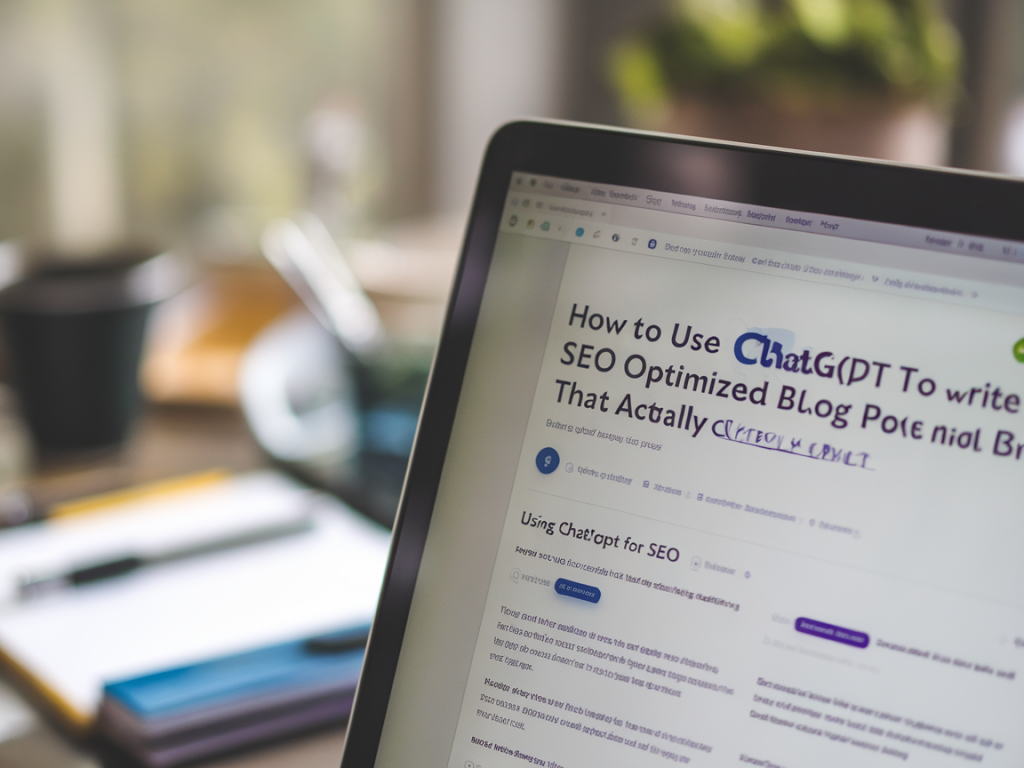Hi there! I'm Élodie Dupont, and if you're anything like me, you're always hunting for smart ways to streamline your content creation process while getting real results. These days, using AI tools like ChatGPT has become a total game changer for inbound marketers and SEO enthusiasts. But here's the thing—writing blog posts that are SEO-optimized is one thing. Writing blog posts that *actually convert*? That’s an entirely different story.
So let’s dive deep into how you can leverage ChatGPT not just to pump out words, but to produce content that ranks on Google and moves your audience to take action.
Start With a Crystal-Clear Objective
Before even opening ChatGPT, I always ask myself: What’s the purpose of this blog post? Is it to educate? Capture leads? Sell a solution? Clarifying the goal informs every keyword I use, every CTA I write, and every internal link I embed.
When you give ChatGPT a prompt, don’t just say "write a blog post about SEO." Instead, be specific. A better command would be something like:
"Write an engaging SEO-optimized blog post for small business owners searching for easy ways to improve their website's Google ranking."
This kind of clarity instantly sets the tone for content that doesn’t just inform—it converts.
Start With Proper Research (Yes, Even With AI)
One of the biggest mistakes I see is relying entirely on AI to spit out keyword-rich content without proper research. While tools like ChatGPT are powerful, they don’t replace your SEO strategy.
Here’s my typical toolkit when planning a new blog post:
- SEMrush or Ahrefs: For keyword opportunities, search volume, and competition analysis.
- Google Search Console: To assess what’s currently working on my website and where there are content gaps.
- AnswerThePublic: Wonderful for exploring actual user questions that you can directly instruct ChatGPT to answer in your blog post.
I take 2–3 primary keywords, a couple of long-tail variations, and create a rough outline with sections for ChatGPT to build on.
Create an Outline That Mirrors Intent
I never instruct ChatGPT to just "write an 800-word blog post." Instead, I give it structure, such as:
- Introduction
- Value of SEO-Optimized Blog Posts
- How ChatGPT Streamlines Content Creation
- Step-by-Step Guide to Writing SEO Blog Posts with ChatGPT
- Common Pitfalls to Avoid
- Optimization Tips (for Conversion and Ranking)
- Call-to-Action Ideas
When your content structure follows what your audience is thinking, it keeps them engaged—and that’s what Google loves too. It’s a win-win!
Train ChatGPT Like It’s Your Content Assistant
Here’s a trick I live by: Don’t just treat ChatGPT like a content vending machine. Give it context. For instance:
"You're a digital marketing expert writing for a blog focused on small business SEO. Write a section that explains why organic traffic is more valuable than paid ads over time."
With fine-tuned instructions like this, your AI assistant becomes smarter and delivers better results. You can even "feed" it some of your past copy or tone preferences to keep voice consistency.
Don't Skip Editing—Human Touch is Golden
This part is crucial. ChatGPT is amazing at speeding up the writing process, but it’s not perfect. I always go back through each draft to:
- Eliminate fluff or robotic phrasing
- Insert storytelling elements or case studies
- Add personal perspectives—my experience helps build trust and authenticity
- Verify any facts or data mentioned
- Customize CTAs based on user behavior or funnel stage
Remember, Google is getting smarter every day. It rewards content that demonstrates E-E-A-T (Experience, Expertise, Authority, Trustworthiness). That’s not something you can fully outsource to a machine.
Optimizing Content for SEO—And Conversion
Once the content is polished, it's time to make it rankable and clickable. Here’s my step-by-step checklist I always use before publishing:
| Optimization Element | Action |
|---|---|
| Title Tag | Include primary keyword; make it enticing |
| Meta Description | Write a compelling summary with a CTA |
| H1 and H2 Tags | Use headings to organize content clearly with supporting keywords |
| Internal/External Links | Link relevant articles and authoritative sources |
| Image Alt Attributes | Describe images using relevant keywords |
| Call-to-Action | Guide readers on the next step (download, sign up, contact, etc.) |
I also like to test different versions of headings and CTAs using tools like A/B testing in platforms such as Google Optimize or Unbounce.
Using Prompts for Higher Conversions
If there's one lesson I learned personally while using ChatGPT, it's this: prompt engineering is everything. Here are a few prompt examples I’ve refined to boost conversions:
- "Write a persuasive paragraph highlighting the value of booking a free consultation call for SEO strategy."
- "Rewrite this bullet point list to focus on end-user benefits instead of features."
- "Create a sense of urgency in this blog conclusion encouraging readers to download the lead magnet."
And yes—ChatGPT is pretty good at understanding voice-of-customer language. You can paste reviews or testimonials and ask ChatGPT to mimic the language for CTA tone. It’s brilliant.
Repurpose Like a Pro
Lastly, I always remind my clients and readers: don't let your fantastic SEO blog post sit idle. ChatGPT can help you repurpose that content into:
- Social media snippets (great for LinkedIn and Twitter)
- Email newsletters with summarized versions
- Video scripts for YouTube or Reels
- Pillar content to support a larger content cluster strategy
This increases the lifespan and reach of your content without doubling your workload. Work smarter, not harder—that's our motto here at Inbound SEO.
Remember, ChatGPT isn’t here to replace you. It’s your digital ally to help you focus on what matters: connecting with your audience authentically, solving their problems, and leading them down a journey—from curiosity to conversion. Let’s keep creating, optimizing, and growing—together.
